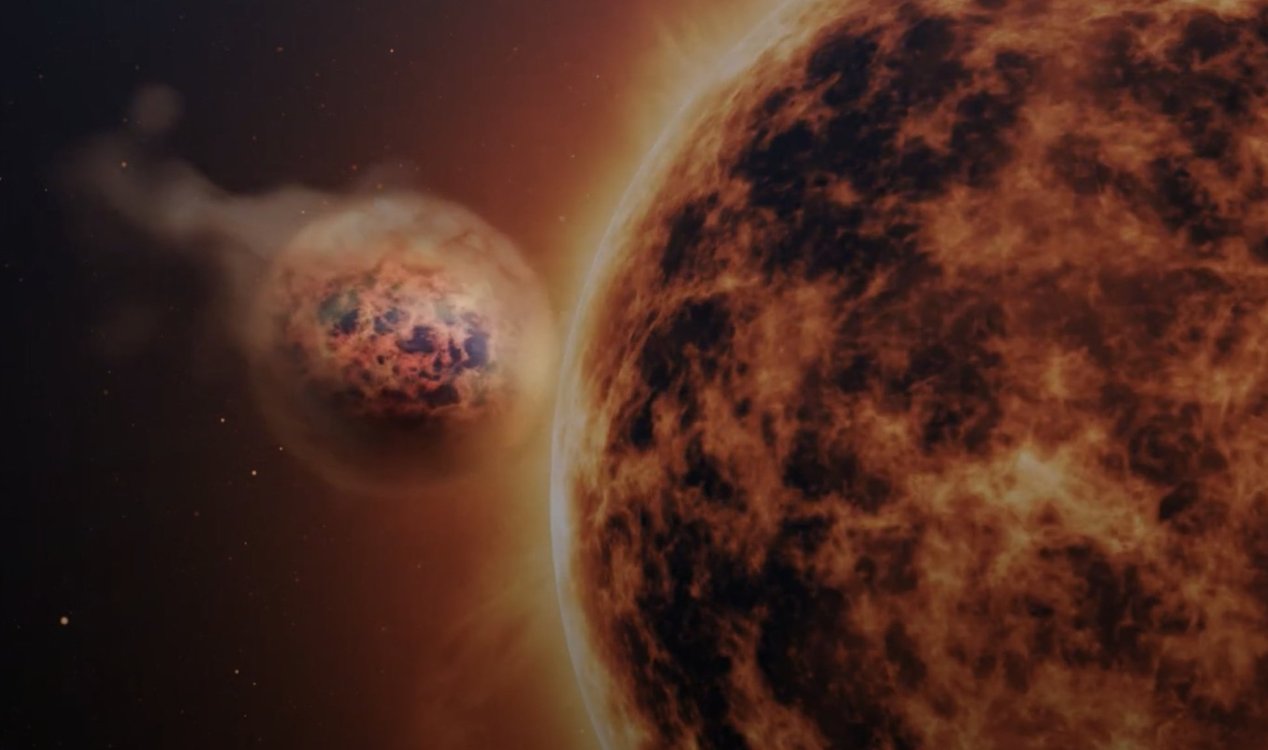Space & Astronomy
November 16, 2023 · 5 comments
5 comments

Image Credit: LUCA School of Arts, Belgium/ Klaas Verpoest et al.
It was originally discovered back in 2017, but now thanks to the James Webb it has been possible to reveal Wasp-107b to be a strange, exotic world with scorching temperatures and silicate sand clouds.
Bizarrely, this sand is also thought to fall from the sky like rain before turning back into vapor as part of an ongoing weather cycle unlike anything seen on any other planet.
The presence of water vapor and sulphur dioxide in its atmosphere would give Wasp-107b the distinct smell of burnt matches, while its atmosphere is thought to churn and swirl due to its raging winds.
"It's a great target because it's really fluffy," said planetary scientist Dr Joanna Barstow at the Open University. "It's one of the fluffiest planets out there and they're the ones we can get these big signals when we look at their atmosphere."
"We've been working on predictions for the past 10 years but nothing has quite prepared us for what we're actually seeing - both what we're finding out and the quality of the data."
"It's been really exciting."
Source: The Guardian | Comments (5)
James Webb reveals exoplanet where sand grains fall as rain
By T.K. RandallNovember 16, 2023 ·
 5 comments
5 comments
Image Credit: LUCA School of Arts, Belgium/ Klaas Verpoest et al.
The planet, known as Wasp-107b, was recently revealed by the James Webb Space Telescope.
Situated 200 light years away in the constellation Virgo, this remarkable extrasolar world is enormous - almost as big as Jupiter - but with a mass more like that of Neptune.It was originally discovered back in 2017, but now thanks to the James Webb it has been possible to reveal Wasp-107b to be a strange, exotic world with scorching temperatures and silicate sand clouds.
Bizarrely, this sand is also thought to fall from the sky like rain before turning back into vapor as part of an ongoing weather cycle unlike anything seen on any other planet.
"It's a great target because it's really fluffy," said planetary scientist Dr Joanna Barstow at the Open University. "It's one of the fluffiest planets out there and they're the ones we can get these big signals when we look at their atmosphere."
"We've been working on predictions for the past 10 years but nothing has quite prepared us for what we're actually seeing - both what we're finding out and the quality of the data."
"It's been really exciting."
Source: The Guardian | Comments (5)

The Unexplained Mysteries
Book of Weird News
AVAILABLE NOW
Take a walk on the weird side with this compilation of some of the weirdest stories ever to grace the pages of a newspaper.
Click here to learn more

Support us on Patreon
BONUS CONTENTFor less than the cost of a cup of coffee, you can gain access to a wide range of exclusive perks including our popular 'Lost Ghost Stories' series.
Click here to learn more
Russia and the War in Ukraine
Science and Technology
Other World News
United States and the Americas
Total Posts: 7,767,991 Topics: 325,012 Members: 203,758
Not a member yet ? Click here to join - registration is free and only takes a moment!
Not a member yet ? Click here to join - registration is free and only takes a moment!


































Please Login or Register to post a comment.